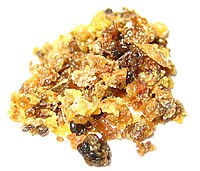History

The origins of clinical pharmacology date back to the Middle Ages, with pharmacognosy and Avicenna's The Canon of Medicine, Peter of Spain's Commentary on Isaac, and John of St Amand's Commentary on the Antedotary of Nicholas. Early pharmacology focused on herbalism and natural substances, mainly plant extracts. Medicines were compiled in books called pharmacopoeias. Crude drugs have been used since prehistory as a preparation of substances from natural sources. However, the active ingredient of crude drugs are not purified and the substance is adulterated with other substances.
Traditional medicine varies between cultures and may be specific to a particular culture, such as in traditional Chinese, Mongolian, Tibetan and Korean medicine. However much of this has since been regarded as pseudoscience. Pharmacological substances known as entheogens may have spiritual and religious use and historical context.
In the 17th century, the English physician Nicholas Culpeper translated and used pharmacological texts. Culpeper detailed plants and the conditions they could treat. In the 18th century, much of clinical pharmacology was established by the work of William Withering. Pharmacology as a scientific discipline did not further advance until the mid-19th century amid the great biomedical resurgence of that period. Before the second half of the nineteenth century, the remarkable potency and specificity of the actions of drugs such as morphine, quinine and digitalis were explained vaguely and with reference to extraordinary chemical powers and affinities to certain organs or tissues. The first pharmacology department was set up by Rudolf Buchheim in 1847, in recognition of the need to understand how therapeutic drugs and poisons produced their effects. Subsequently, the first pharmacology department in England was set up in 1905 at University College London.
Pharmacology developed in the 19th century as a biomedical science that applied the principles of scientific experimentation to therapeutic contexts. The advancement of research techniques propelled pharmacological research and understanding. The development of the organ bath preparation, where tissue samples are connected to recording devices, such as a myograph, and physiological responses are recorded after drug application, allowed analysis of drugs' effects on tissues. The development of the ligand binding assay in 1945 allowed quantification of the binding affinity of drugs at chemical targets. Modern pharmacologists use techniques from genetics, molecular biology, biochemistry, and other advanced tools to transform information about molecular mechanisms and targets into therapies directed against disease, defects or pathogens, and create methods for preventative care, diagnostics, and ultimately personalized medicine.
Comments
Post a Comment